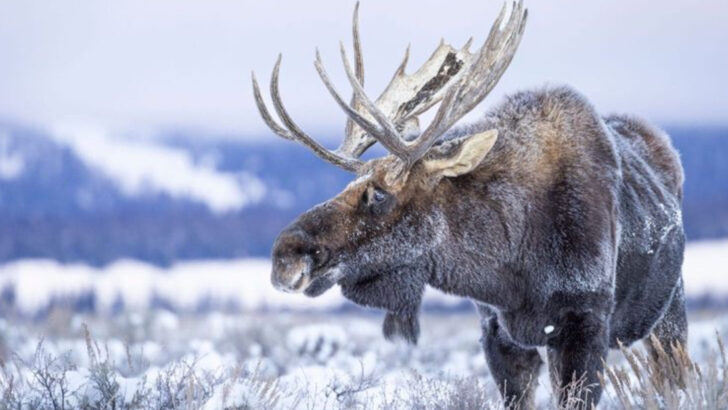Alaska isn’t just big in size—it’s big in personality, too, especially when it comes to its wildlife. Tucked between vast forests, icy rivers, and sweeping tundra are animals that don’t exist anywhere else in the world. Some are elusive and rarely seen, while others are bold, built to survive the extremes that define this remote landscape.
From massive mammals to quiet, quick-footed creatures, each one plays a role in the state’s rugged ecosystem. Spotting them isn’t guaranteed, but knowing they’re out there—living in ways most of us can hardly imagine—adds to Alaska’s wild, untamed character. It’s a reminder that in some corners of the world, nature still writes its own rules.
Alaskan Moose
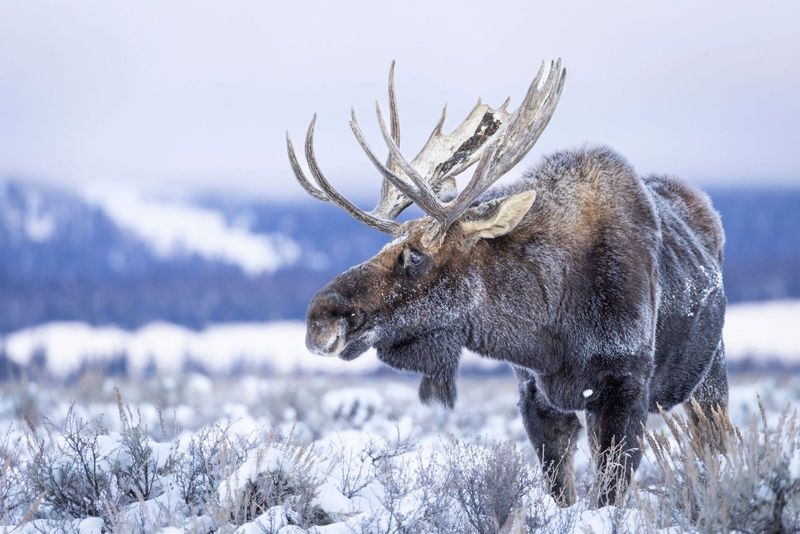
The Alaskan Moose, towering above the snow-laden landscape, captivates with its impressive stature. These gentle giants, often spotted near marshes and rivers, boast antlers that can span up to six feet. Their diet primarily consists of aquatic vegetation, which they skillfully forage in the cold waters. During the mating season, their haunting calls echo through the wilderness. Calves, born in spring, quickly learn to navigate their icy home. Despite their size, moose can sprint at remarkable speeds, surprising anyone fortunate enough to witness it. Observing a moose in its natural habitat is an unforgettable Alaskan experience.
Gyrfalcon

Soaring through the icy skies, the Gyrfalcon is a true master of its domain. As the largest falcon in the world, this formidable bird commands attention with its sheer size and elegance.
Unlike other falcons, the Gyrfalcon’s elusive nature makes it a rare sight, adding to its mystique. Found primarily in the Arctic and subarctic regions of Alaska, it thrives in the cold, hunting small mammals and birds with precision.
Did you know? The Gyrfalcon was once a coveted prize among falconers in medieval times, symbolizing nobility and strength. Its presence in Alaska is a testament to the wild beauty of this land.
Bald Eagle
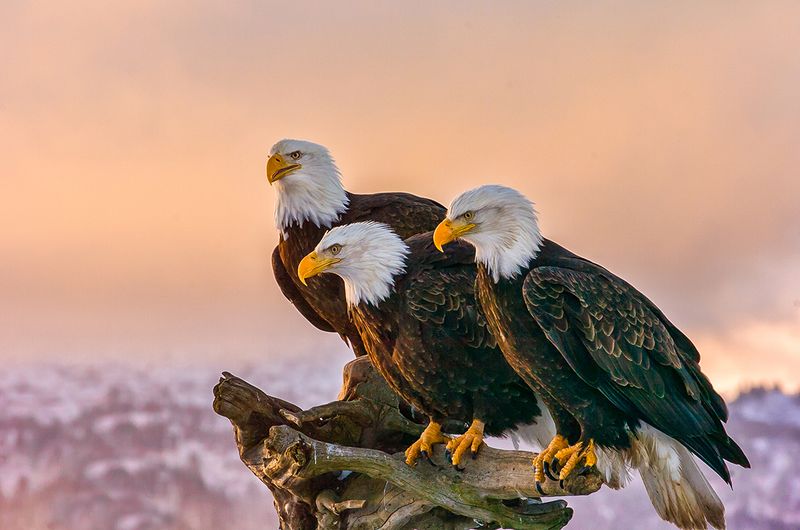
The Bald Eagle, a symbol of strength and freedom, thrives along Alaska’s rugged coastlines. With a wingspan reaching up to seven feet, these formidable predators glide gracefully through the sky. Known for their keen eyesight, eagles can spot prey from great heights. They primarily feed on fish, swooping down with precision to capture their meals. Nesting in tall trees, they raise their young in secluded areas. Observing a Bald Eagle in flight, against a backdrop of snow-capped peaks, is a breathtaking sight that embodies the wild spirit of Alaska’s untamed wilderness.
Sea Otter
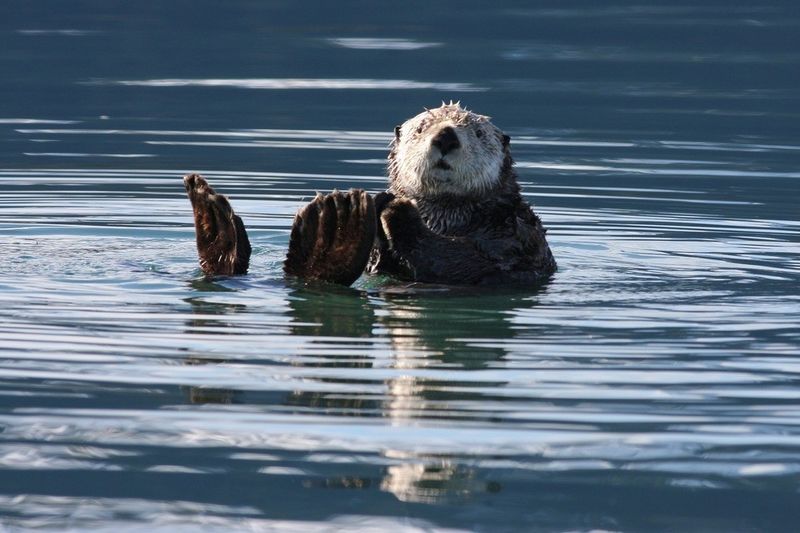
With an endearing face and a playful demeanor, the sea otter is a cherished inhabitant of Alaska’s coastal waters. Known for its remarkable ability to use tools, this marine mammal can often be seen cracking open shellfish with rocks.
Sea otters play a crucial role in maintaining the health of kelp forests, as they prey on sea urchins that would otherwise decimate these vital ecosystems.
Intriguingly, the sea otter’s thick fur is the densest in the animal kingdom, providing essential insulation against the frigid waters. Their playful antics and ecological importance make them a symbol of resilience.
Grizzly Bear

The Grizzly Bear, a powerful presence in Alaska’s wilderness, is both feared and admired. These bears, known for their strength, are often seen fishing for salmon in Alaska’s rushing rivers. With thick fur and sharp claws, they are perfectly equipped for their environment. In preparation for hibernation, they consume large amounts of food to build fat reserves. Grizzlies are solitary creatures, yet mothers display fierce devotion to their cubs. Witnessing a Grizzly Bear in its element is a reminder of nature’s raw power and beauty, as they stand as true symbols of Alaskan wildlife.
Puffin
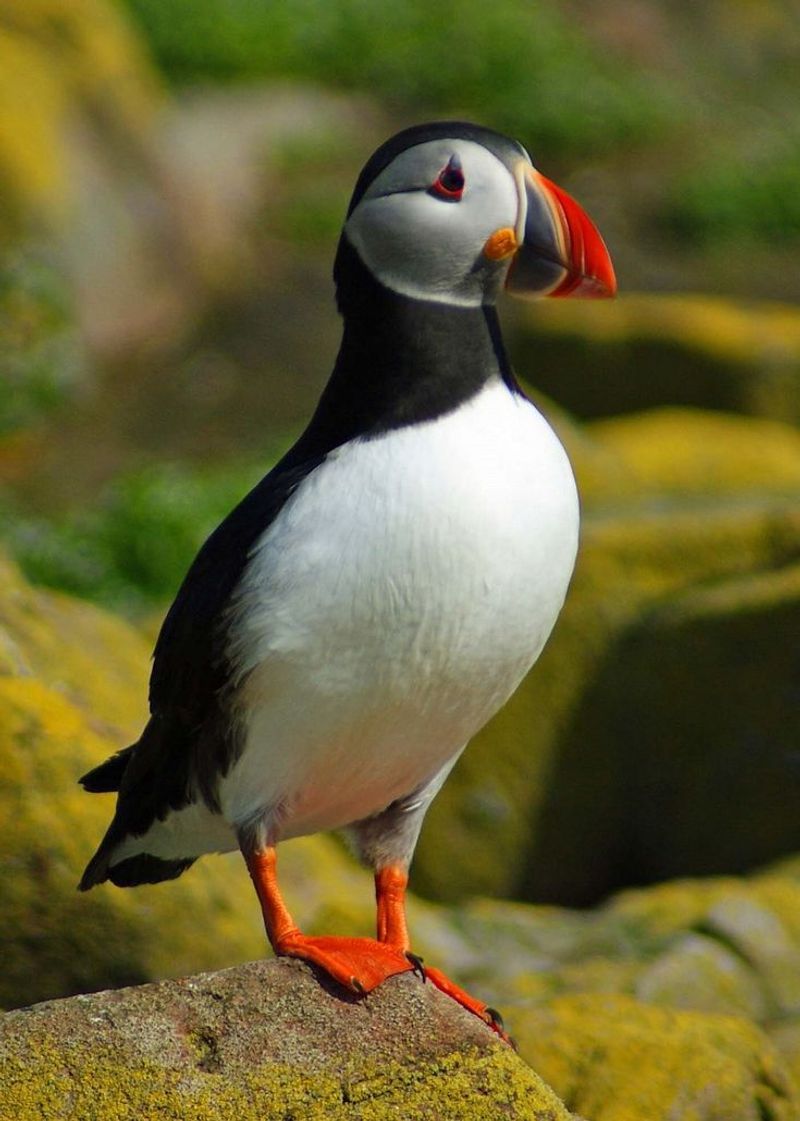
With its vibrant beak and expressive eyes, the puffin is one of Alaska’s most charismatic seabirds. Often referred to as “clowns of the sea,” these birds are skilled swimmers, using their wings to “fly” underwater in search of fish.
During the breeding season, thousands of puffins gather on remote cliffs, creating a spectacular sight. Their social nature and comical appearance endear them to birdwatchers and nature lovers alike.
A quirky fact: puffins can hold several small fish in their beaks at once, thanks to a specialized hinge mechanism, allowing them to efficiently feed their chicks during the breeding season.
Caribou
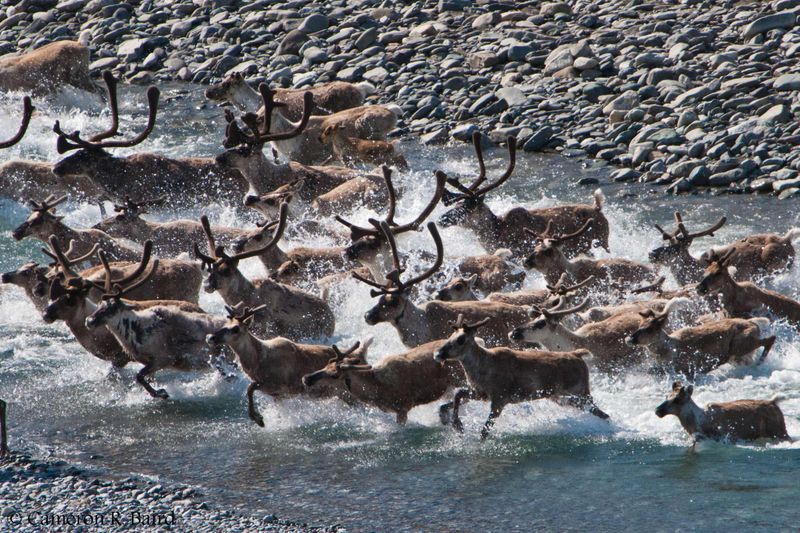
Caribou, also known as reindeer, are synonymous with the Alaskan tundra. These migratory animals travel in herds across vast landscapes, covering thousands of miles each year. Both males and females sport antlers, a unique feature among deer species. Caribou feed on lichens and other tundra vegetation, essential for their survival in harsh climates. During migrations, they follow age-old routes, navigating by instinct. Their ability to endure extreme conditions and traverse great distances highlights their resilience. Observing a Caribou herd on the move is a testament to the enduring spirit of Alaska’s wild inhabitants.
Wolf
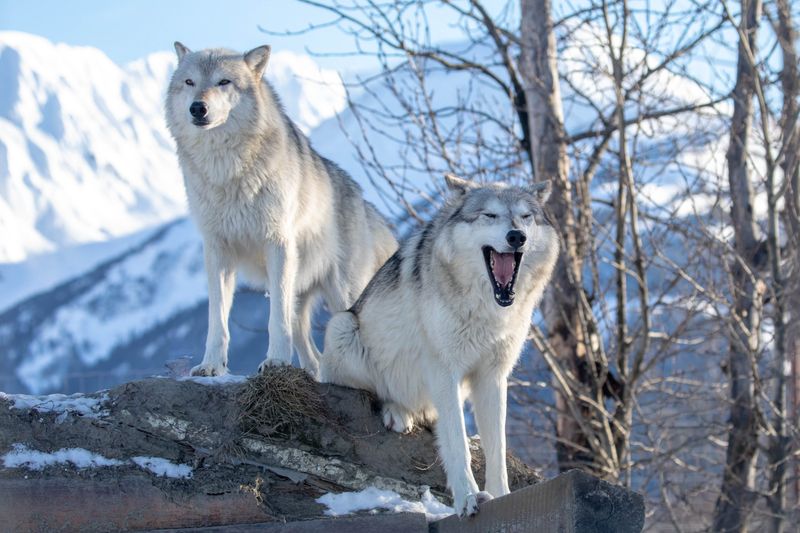
Wolves, with their haunting howls, are a quintessential part of Alaska’s untamed wilderness. These intelligent and social animals live in packs, each led by an alpha pair. Wolves are exceptional hunters, relying on teamwork and strategy to capture prey. Their diet consists of deer, moose, and smaller mammals. The bonds within a wolf pack are strong, with members caring for each other’s wellbeing. Observing a wolf in its natural habitat offers insight into their complex social structures. Their presence in the wild underscores the delicate balance of Alaska’s ecosystems and the beauty of untamed nature.
Polar Bear
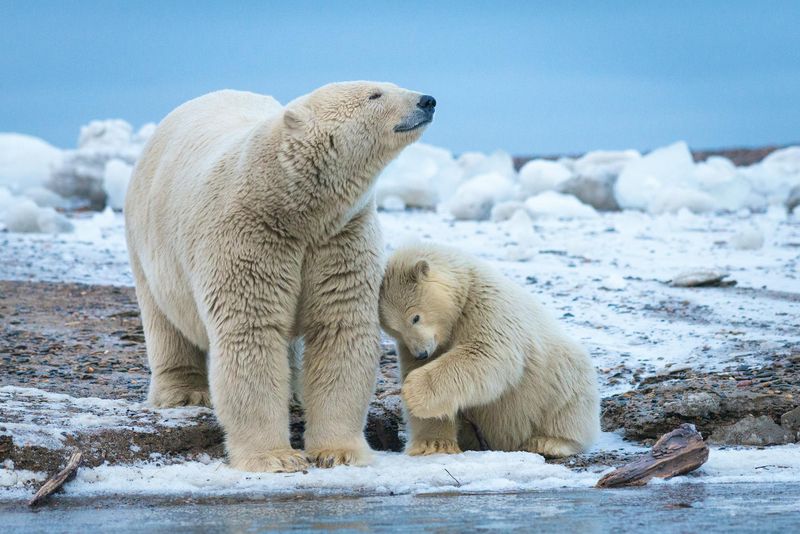
The Polar Bear, an iconic sentinel of the Arctic, roams the icy expanses of Alaska’s northern reaches. Adapted to cold climates, these majestic bears have thick fur and a layer of blubber for insulation. They primarily hunt seals, relying on sea ice to reach their prey. During winter, female bears give birth in snow dens, nurturing their cubs until spring. Polar Bears are powerful swimmers, traveling long distances between ice floes. Their presence is a poignant reminder of the fragile beauty of the Arctic ecosystem. Witnessing a Polar Bear in its natural habitat is truly awe-inspiring.
Dall Sheep
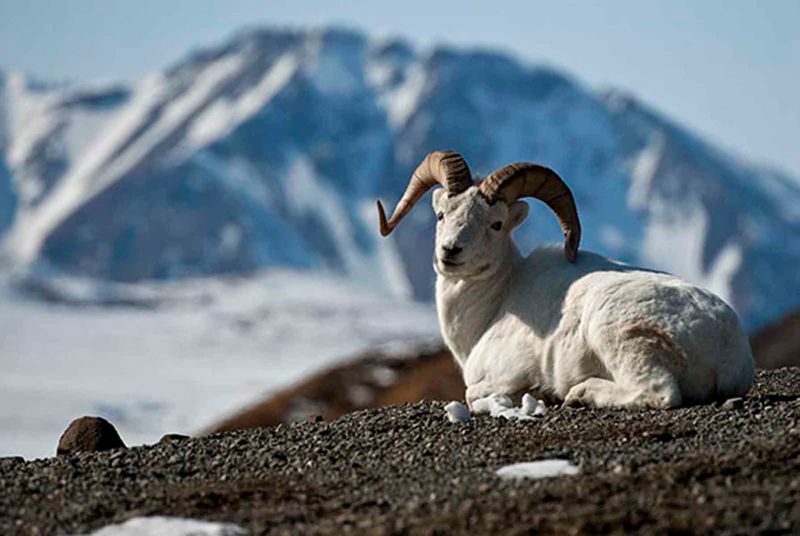
Dall Sheep, with their striking white coats, are a symbol of Alaska’s rugged mountain landscapes. These sure-footed animals are often found perched on steep, rocky slopes, where they skillfully navigate the terrain. Their large, curved horns are used in battles during mating season, as rams vie for dominance. Dall Sheep graze on grasses and other mountain vegetation, adapted to survive in harsh conditions. Their presence on the cliffs is a testament to their agility and resilience. Observing a group of Dall Sheep against a snowy backdrop is a captivating experience, showcasing the beauty of Alaska’s wild heights.
Orca

Orcas, also known as killer whales, are majestic marine predators found in Alaska’s cold waters. These intelligent creatures live in pods, exhibiting complex social structures and communication skills. Known for their striking black and white appearance, orcas hunt cooperatively, preying on fish, seals, and even larger whales. Their acrobatic displays and playful behavior make them a captivating sight. Orcas are also highly vocal, using a range of sounds to communicate. Watching a pod of Orcas glide through the Alaskan waters is an unforgettable experience, highlighting the rich marine life thriving in this pristine environment.
Stellar Sea Lion

Stellar Sea Lions, the largest of the sea lion species, are a prominent sight along Alaska’s coast. These marine mammals are known for their robust build and distinctive roar. They gather in large colonies on rocky shores, where they bask in the sun and socialize. Stellar Sea Lions feed on fish and squid, diving to impressive depths in search of sustenance. Males, known as bulls, establish territories and compete for mates during breeding season. Observing these impressive animals in their natural habitat reveals the dynamic nature of Alaska’s coastal ecosystems and the vibrant life they support.
Humpback Whale
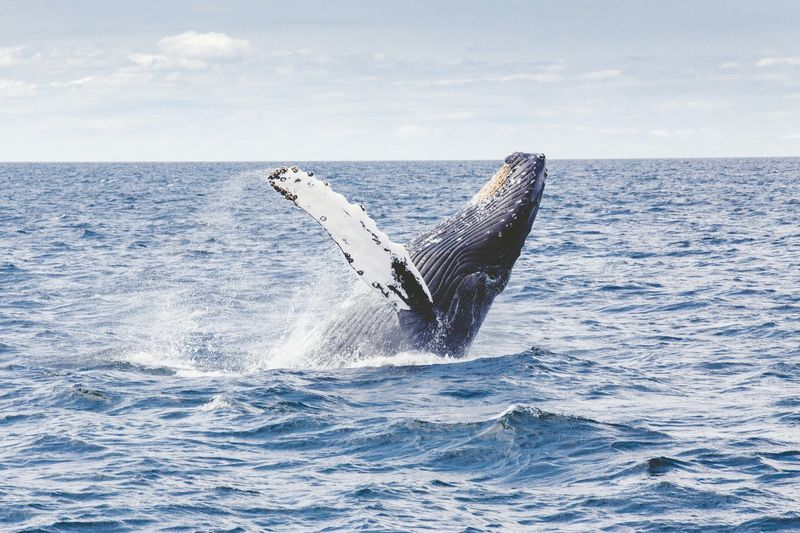
Humpback Whales, with their graceful movements and haunting songs, are a wonder of Alaska’s marine environments. These massive creatures migrate thousands of miles from tropical breeding grounds to the nutrient-rich waters of Alaska. Known for their acrobatic breaches and long pectoral fins, humpbacks feed on krill and small fish, employing bubble-net feeding techniques. Their songs, complex and melodious, can carry for miles underwater. Observing a Humpback Whale breach is a breathtaking experience, showcasing the majesty of these gentle giants. Their presence in Alaskan waters highlights the rich biodiversity of the region’s oceanic ecosystems.
Lynx
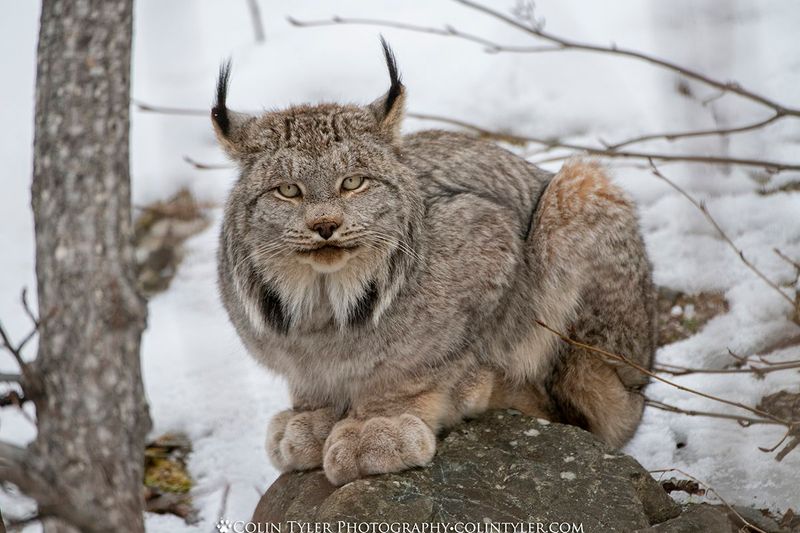
The Lynx, a solitary and elusive feline, prowls silently through Alaska’s snowy forests. Known for their tufted ears and striking spotted coats, lynxes are skilled hunters. They primarily prey on snowshoe hares, relying on stealth and keen senses to catch their quarry. Lynxes are solitary creatures, with each maintaining a territory marked by scent. In the harsh winter, they navigate the deep snow with their large, padded paws. Spotting a lynx in the wild is a rare and thrilling experience, offering a glimpse into the secretive life of one of Alaska’s most mysterious predators.
Gray Wolf
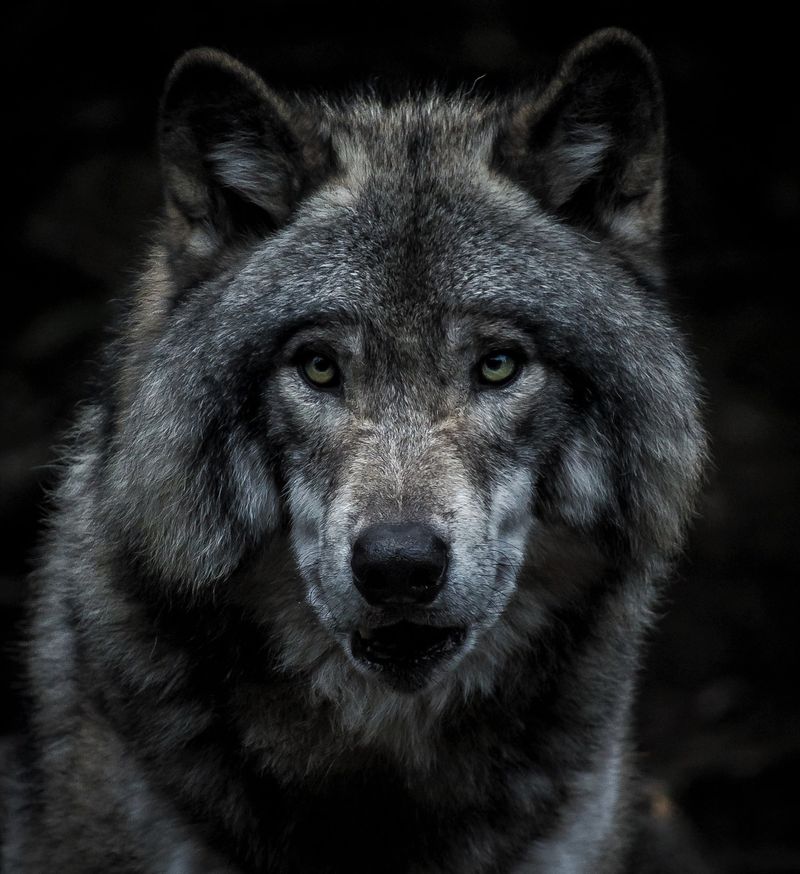
Gray Wolves, an iconic species of Alaska, roam the remote wilderness in tightly-knit packs. These social animals are known for their complex hierarchical structures, with each pack led by an alpha pair. Wolves communicate through a variety of vocalizations, including howls that echo across the landscape. Their hunting strategies are coordinated and efficient, allowing them to take down large prey such as moose and caribou. Observing a Gray Wolf in its natural environment is an exhilarating experience, highlighting the intricate social dynamics and adaptability of these remarkable creatures. Their presence is vital to maintaining ecological balance.
Arctic Fox
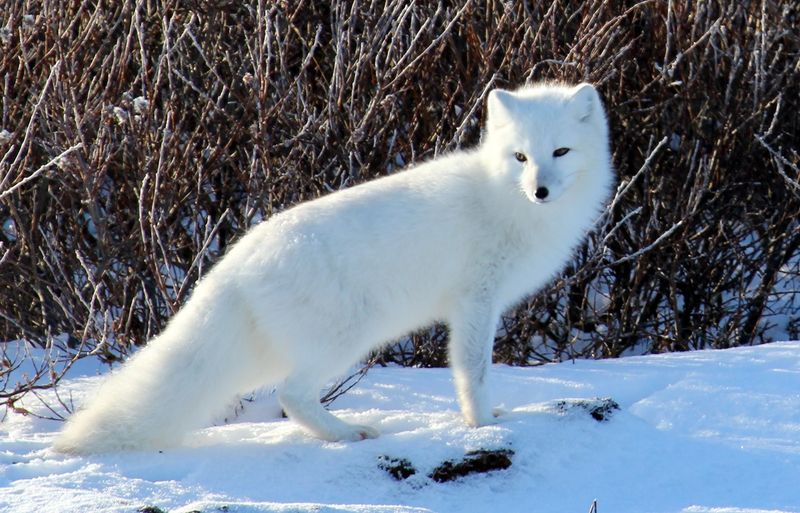
The Arctic Fox, a master of survival in extreme conditions, thrives in Alaska’s tundra. With a thick, white coat that provides insulation and camouflage, these small foxes are well-adapted to their environment. In winter, they hunt for lemmings and other small prey, using their acute hearing to locate them beneath the snow. The Arctic Fox’s coat changes to brown in summer, blending with the tundra’s thawed landscape. Their playful, curious nature and resilience in the face of harsh conditions make them a symbol of the Arctic’s indomitable spirit. Encountering one under the northern lights is magical.
Beaver
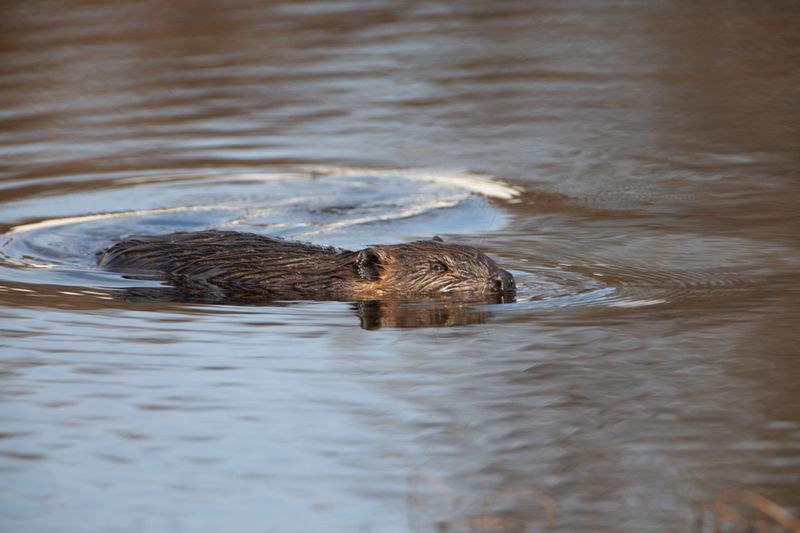
Beavers, known for their industrious nature, play a crucial role in Alaska’s ecosystems. These skilled builders construct intricate dams and lodges, creating wetland habitats that support diverse wildlife. Beavers use their strong teeth to fell trees, shaping the landscape to suit their needs. Their dams help regulate water flow, prevent erosion, and maintain healthy ecosystems. Beavers are social animals, living in family groups and working together to maintain their homes. Observing a beaver at work offers insight into the transformative power of nature and the interconnectedness of life in Alaska’s wilderness.
Musk Ox
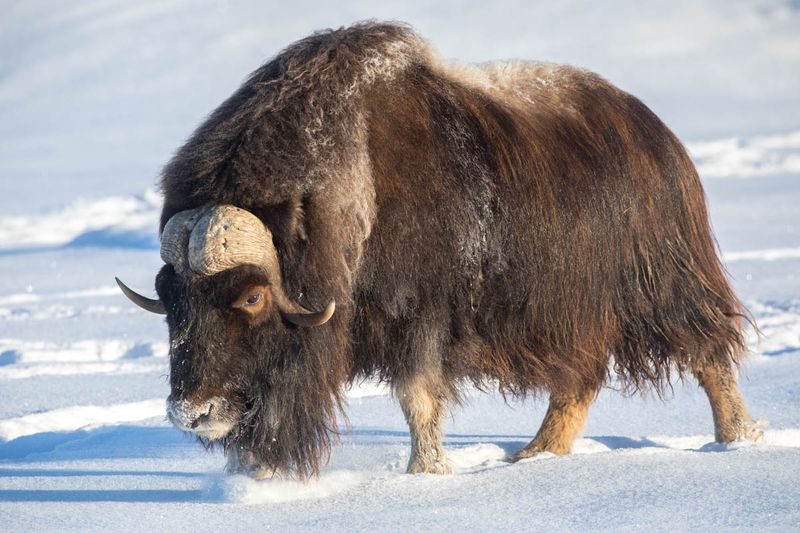
Musk Oxen, with their shaggy coats and formidable presence, are iconic inhabitants of the Alaskan tundra. These prehistoric-looking animals are well-adapted to the harsh Arctic climate, with thick fur and a strong build. Musk Oxen live in herds, providing protection against predators. During harsh winters, they use their hooves to dig through the snow for vegetation. The sight of a Musk Ox herd is a reminder of the resilience and strength required to survive in this challenging environment. Their presence is a testament to the rich biodiversity and enduring spirit of Alaska’s untamed wilderness.
Northern Fur Seal
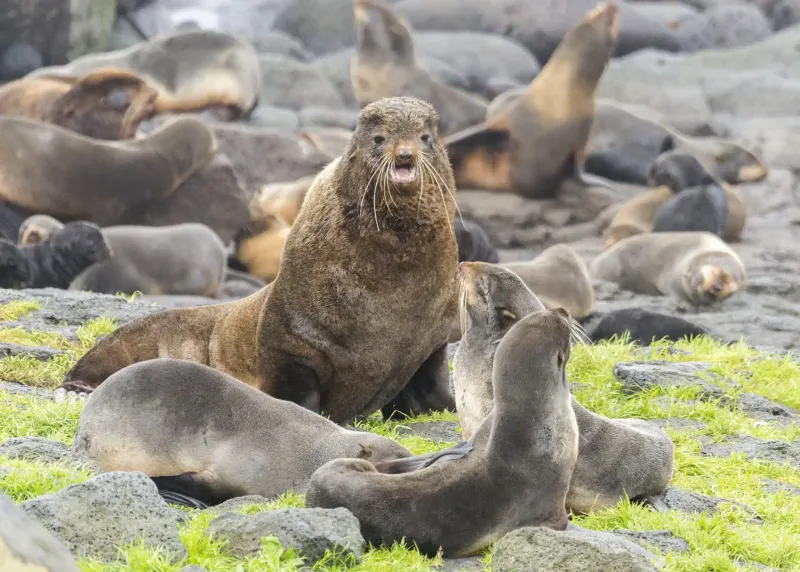
Northern Fur Seals, agile marine mammals, inhabit the chilly waters of the Alaskan Bering Sea. Known for their thick fur and exceptional swimming abilities, these seals are adept hunters, diving deep to catch fish and squid. They come ashore to breed on rocky islands, where males establish territories and compete for mates. Northern Fur Seals are highly social, gathering in large colonies during breeding season. Observing these agile creatures in their natural habitat highlights the dynamic marine ecosystems of Alaska and the intricate lives led by its oceanic inhabitants.
Red Fox
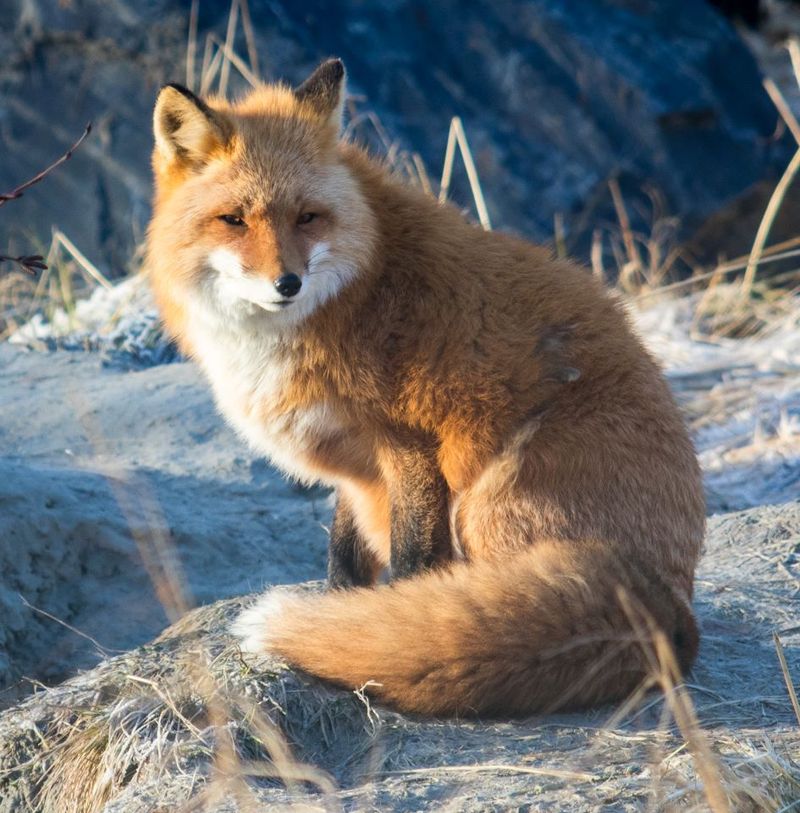
The Red Fox, with its vibrant coat and bushy tail, is a charming presence in Alaska’s forests. These adaptable animals thrive in a variety of habitats, from dense woods to open tundra. Red Foxes are skilled hunters, preying on rodents, birds, and small mammals. They exhibit playful behavior and a keen intelligence, often seen pouncing through the snow in pursuit of prey. During the autumn, their coats take on a fiery hue, blending with the changing foliage. Encountering a Red Fox is a delightful experience, offering a glimpse into the lively and resourceful character of Alaska’s wildlife.
Snowy Owl

The Snowy Owl, a striking bird of prey, graces the Alaskan tundra with its presence. Known for their distinctive white plumage and piercing yellow eyes, these owls are adept hunters. They primarily feed on lemmings and other small mammals, using their keen vision to spot prey from a distance. Snowy Owls are highly nomadic, traveling vast distances in search of food. During the breeding season, they nest on the ground, raising their young in the open tundra. Observing a Snowy Owl against the stark beauty of Alaska’s icy landscapes is a truly mesmerising experience.
Harbor Seal
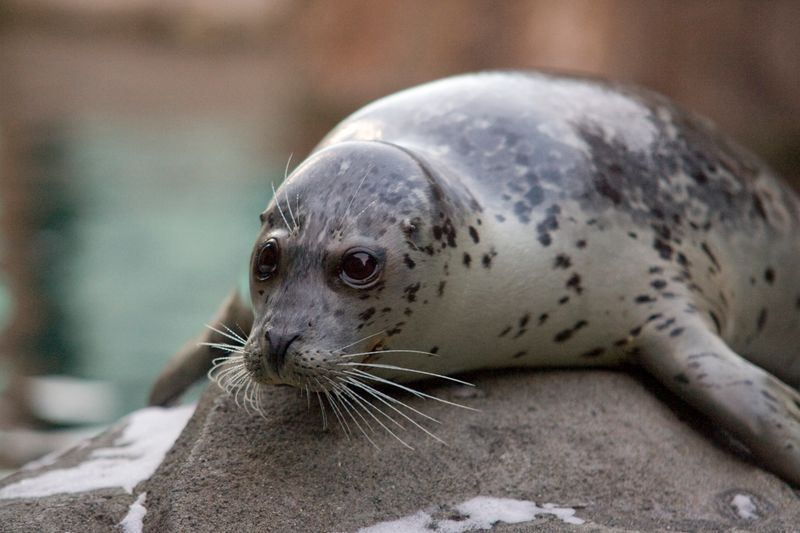
Harbor Seals, endearing marine mammals, can be found along Alaska’s extensive coastlines. These seals are known for their spotted coats and gentle nature, often seen lounging on rocks or swimming close to shore. They feed on fish, squid, and crustaceans, using their agile bodies and keen senses to hunt. Harbor Seals are solitary creatures, yet they occasionally gather in groups to sunbathe. Observing a Harbor Seal in its coastal habitat provides insight into the rich marine life of Alaska and the serene beauty of its oceanic environments. Their presence adds charm to the rugged landscape.

